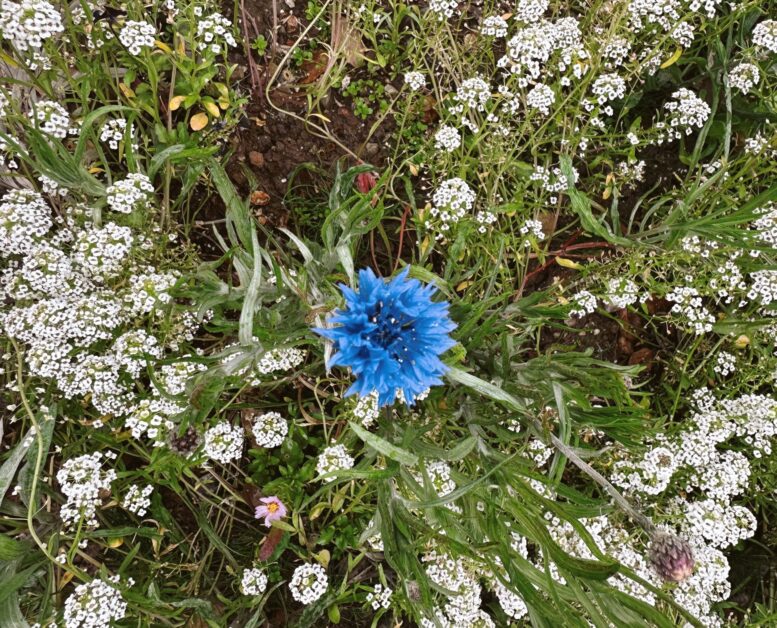What’s better: a yard with one plant or a yard filled with a variety of plants? From an ecological perspective, a variety of plants will always be the right answer. More specifically, a yard filled with a variety of native plants is the best eco-friendly way to have a yard.
Native plants are naturally occurring plant species, meaning they evolved with or migrated naturally to an area, instead of being introduced to the landscape through human involvement. Native plant gardens are extremely beneficial and, not to mention, aesthetically pleasing which makes them invaluable to us and our environment.
Unfortunately, native plants need conservation help.
Despite native plants being the best eco-friendly way to have a yard, we’ve created some problems for ourselves. We’ve impacted our environment substantially, isolating ourselves in an urbanized bubble. Natural landscapes have been primarily forsaken in favor of man-made landscapes that lack biodiversity and contribute to rapid species loss.
Urbanization causes things like habitat degradation, habitat fragmentation, and habitat loss. Habitat fragmentation isolates populations and decreases habitat connectivity, meaning wildlife gets stuck in a bubble and has a harder time surviving. Habitat degradation and loss, on the other hand, make areas completely unsuitable to sustain the species that once called it home. Urbanization also paves the way for invasive species, or species not native to an area. Invasive plants spread quickly and readily push out native species.
Habitat loss and invasive plants are the leading cause of native biodiversity loss. Native plants are struggling as a result, globally two out of five plant species are estimated to be at risk of extinction. Unsurprisingly, urbanized areas tend to have the lowest amounts of biodiversity.
Native plants play a huge role in ecosystems.
Native plants lead to greater biodiversity, greater community structure, and more ecosystem services. This is because native plants determine what can survive in an ecosystem. If you have more diverse plants, you can have more diverse animals! More specifically, species abundance is generally higher in areas with native plants compared to areas with non-native plants.
Native pollinators are some of the insects that provide ecosystem services and are positively affected by native gardens. The ecosystem services insects provide for just the US are estimated to be worth $56 billion!
Invasive plants are bad news for native plants and overall ecosystem health too. So, you can’t make up for a lack of native plants with an increase in invasive plants and expect the same results. Invasive plants impact water quality, tree cover, biodiversity, increase fire risk, and are costly to maintain.
Large areas with invasive plants are more likely to erode during flood events because of a lack of root structure diversity. Invasive plants also give less stream cover by pushing out native plants and making it difficult for trees to grow. This leads to warmer water temperatures which then harms the entire ecosystem! A healthy plant community has a variety of herbs, shrubs, and trees that are suited for the environment they are in.
Native plants help the environment thrive.
Unlike invasive plants, native plant roots extend deep into the soil and many have branching root structures that bind the soil and reduce erosion. Native plants also don’t require as much water as non-native plants and don’t require pesticides. They are easier to grow because their growing requirements are easily met in the environment they are meant to be in! Overall, native plants are easier to grow, save you money, and are better for the environment.
Native plant gardens conserve natural spaces.
We shouldn’t be isolating ourselves from nature because, to live sustainably, we must live synergistically with our environment. We need to support wildlife, more than ever, especially to help the resiliency of our planet in the face of climate issues. We need to protect and improve habitats, even in an urban setting, to remedy the harm we have already done to the environment. Native plant gardens are the perfect way to integrate natural spaces into our man-made landscapes.
Restoring native plants will help us live sustainably within our environment. Native plant gardens support local wildlife, like pollinators and birds, by providing resources in an otherwise resource-poor area (aka our man-made landscapes). The more people who choose to grow native plants in their yards, the better. This is because it will lessen the distance between viable habitat sites and provide resources needed to support wildlife.
Native plant gardens will help us reconnect with nature.
For human health and environmental health, we need to find ways to reconnect to nature. Even in urban landscapes, native plants are highly beneficial. Although native plant gardens aren’t a replacement for protected areas and overall systemic change, they are a way we as individuals can help reconnect with nature. It’s also so much more cost-effective, less water-intensive, and more aesthetically pleasing!
Overall, planting a wider variety of plant species in your garden will attract a higher diversity of wildlife. Keeping potted native plants outside your door, planting a few native species, or just mowing your lawn less can also have amazing benefits. This act of stewardship can help wildlife survive and persist in a changing environment. Your community and the local wildlife will thank you.

